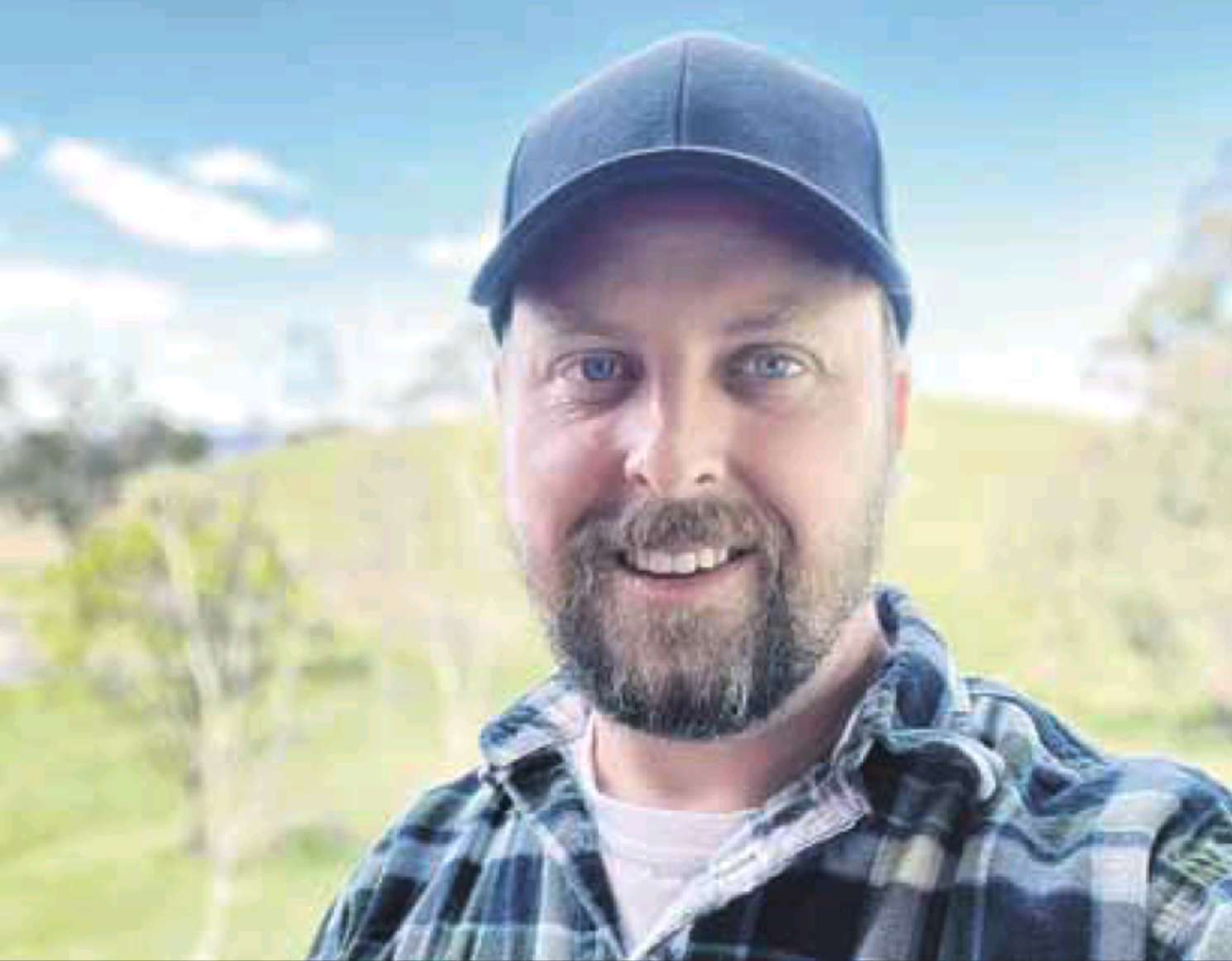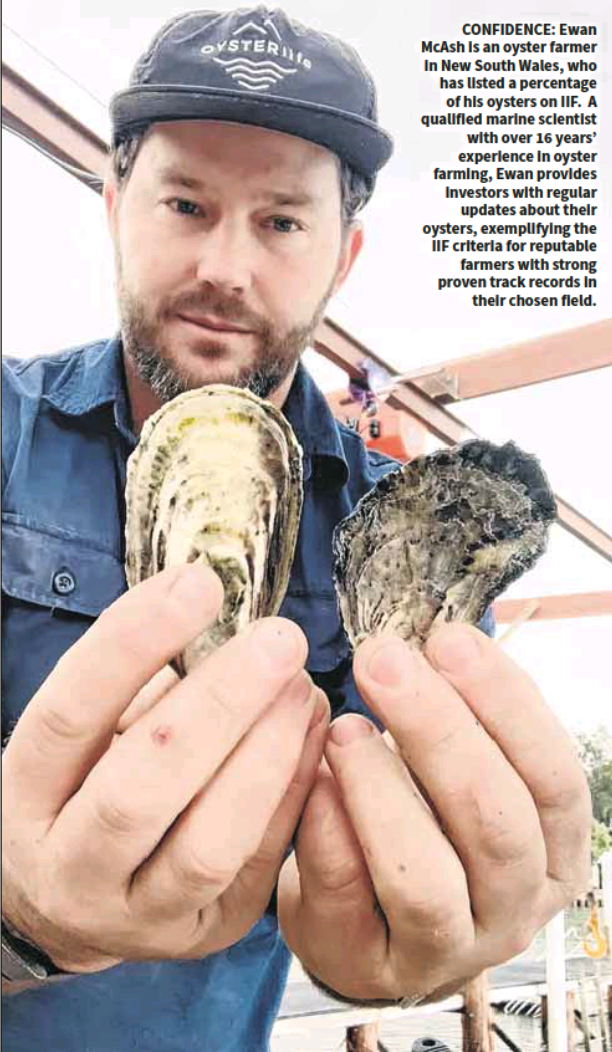Embracing AgTech invites consumers to Invest Inya Farm
AGTECH: Mansfield local Nathan MacPhee is currently running a pilot app of his Invest Inya Farm platform, with investors able to buy steers and oysters on the virtual marketplace.
MANSFIELD resident Nathan MacPhee has recently launched the pilot app for his startup, Invest Inya Farm (IIF), with cattle in Mansfield, oysters in Bateman’s Bay and ginger in the Northern Territory all being trialled preceding the nation-wide roll-out.
In order to achieve the National Farmers’ Federation’s bold vision for Australian agriculture to become a $100 billion industry by 2030, new forms of investment need to be identified that don’t compromise national interest.
AgriFutures estimates that $8.7 billion per annum in new capital will be required to achieve this goal.
Nathan is proposing a fresh form of capital that has never been accessed before to contribute in part to this total.
“What if anyone could invest in agriculture without owning a farm?” said Nathan.
“What if you could earn a strong return while supporting Australian farmers?
“What if anyone could have a farm in their pocket and watch their investments grow?”
Deemed more Agriculture Finance Technology or Ag FinTech, Nathan said the technology offers something completely new to Australia - the ability for the individuals to invest directly into farming or agriculture.
Through the platform people can invest in a farm’s production and reap a profit when the farmer eventually sells, building a mutually rewarding bond between farmers and consumers.
The app enables farmers to list - and anyone to invest in - real on-farm agricultural assets, whether that is a single cow, a row of grapevines or a dozen oysters.
“It’s not about investing in the farm itself and compromising landownership,” said Nathan.
“We are conscious of not being a burden on farmers.
“Nor do we want to disrupt their business model, or interfere with the process.
“It’s more about buying a managed risk and investing in the agricultural production cycle.
“For farmers it injects new capital into operations, improves cash flow and liquidity and mitigates risk, as upfront costs are fractionalised.
“And for investors it is a risk that offers a lucrative return, but as all the farmers on the app are accredited with proven track records - which will be visible to investors - there is that transparency.”
The idea for Invest Inya Farm came after Nathan moved to Mansfield from the dizzy heights of corporate Sydney.
Having spent over 20 years in financial services at senior management level, his wife’s desire to exchange the daily grind for a simpler lifestyle, had the couple contemplating a tree change.
“My wife grew up on a farm, and she had a yearning to move to the country, ideally near a ski resort,” said Nathan.
“Now at this stage I was commuting regularly between Sydney and Melbourne, and it just happened that I looked out of the airplane window one day and saw Mount Buller covered in snow.
“And then I saw Lake Eildon, and I didn’t know where this area was, but I knew I wanted to find out.
“When we landed, I immediately rang my wife, and said that I might have found the new home that we were looking for.
“It’s near a ski resort, and there is a massive lake - which were both prerequisites - and it’s only two hours from Melbourne, I said. “We then decided we needed to visit. “And we loved it immediately, and so we moved.
“And we’ve been here for over three and a half years.
“However, I only really settled into being a local six months before COVID hit.
“Up until then I had commuted to Sydney every week from Albury, and I’d had enough.
“I took time off to reassess the situation, and work out what direction to take my career in.
“Progressively more enchanted by the prospect of farming, I had, however, come to the blunt realisation that I didn’t have sufficient land or resources to move into agriculture in a meaningful way.
“I had deliberated on how I could get into agriculture, and unless I inherited a decent tract of land, or accrued enough wealth to buy a big property, or considered a niche market I would be unable to make it a viable vocation.
“However, from this realisation an idea was spawned.
“If I can’t buy the land, what if I could buy the cow?
“There are lots of people who are interested in agriculture, and who have accessible capital.
“Agriculture is essential to our survival, and yet 90 to 95 per cent of the community can’t participate in the process.
“What if they could?
“The initial premise for the app was quite rudimentary, viewing a cow as an appreciating asset that starts small and grows in value over time and through functional inputs.”
It was on attending Beef Week in Rockhampton that Nathan approached Fiona Simpson, the president of the National Farmers’ Federation, with his idea.
With the industry looking to generate significant capital through alternative ownership models, reduce risk management barriers and at the same time promote connectivity between producers and consumers, Nathan’s proposal was a timely one and the feedback he received from Fiona encouraged him to further explore his idea.
Nathan was initially concentrating on the livestock industry, however Fiona suggested his platform might be particularly relevant to broadacre farming, and other horticultural endeavours.
And as a result, black sesame is one such crop that will soon be added to the platform, with a Northern Territory farmer coming on board before the end of the year, potentially making 30 hectares of the crop available through the IIF app.
“The farmers are able to allocate up to 50 per cent of their crop through Invest Inya Farm, at parcels of a tenth of a hectare,” said Nathan.
“Buy-in is $100 which covers the farmer for things like input costs, leases and harvesting.
“Working on the proviso that one hectare produces one tonne of seed and seed is $1800 per tonne, an investment of $100 in one tenth of the crop will generate $180.
“The profit is then split with the farmer and the investor, which means that the investor receives $40 on top of the initial investment, effectively giving a 40 per cent return, over a five to eight month period.”
The app also serves the bigger purpose of community engagement and education.
Nathan is currently in discussions with a Beechworth farmer, who he’s very keen to work with.
This farmer grows apple trees for nurseries and orchards, and Nathan has a vision of a classroom of children bringing in their $8 at the beginning of the year and purchasing an apple tree.
They learn about all the costs and margins, and then over the next nine months they receive small updates and photo as to how their tree is growing and their investment is progressing, via the app.
“At the end of the period, the tree is then sold for say $11 and the students get back their investment plus a profit of $1.50,” said Nathan.
“So they learn how and why apple trees grow.
“They learn about money, investment and interest.
“And all within a real and engaging lesson.
“This is not about major investment, this is about real people putting their dollars into agriculture.
“It’s nurturing an emotional connection and supercharging it with a financial connection.
“And it allows producers to build a brand directly with consumers, so that the best farmers with the best profiles attract the best investors who are willing to pay more.
“Producers do not need to sell at market and below rates for investors to buy in.
“If the farmer is providing exceptional outcomes for their investors, they can charge premium rates and bring that future cash flow forward.”
Nathan uses oyster farmer Ewan McAsh as an example of the benefits of accessing that future cash flow.
With the festive season fast approaching, the demand for oysters is set to significantly increase and command higher prices.
Ewan placed 4000 dozen oysters with investors at $6.90 per dozen.
These small grade Sydney rock oysters will be fattened out over three months to a medium size where Ewan will then get a premium price of $8.20 per dozen.
Ewan will sell the product into the hospitality industry.
The benefit of having investors is that Ewan is able to hold onto oysters and grow them out and get a premium price, when normally he would have considered selling some of his harvest as smaller grade molluscs to finance the next crop.
“And at the same time he has built his brand and created a connection with his market,” said Nathan.
“We anticipate investors will want to go to the restaurants that stock ‘their’ oysters. “There will be that sense of ownership. “And with the app it not only provides information about each specific crop and the farm on which it is grown, it gives regular updates on weather events in real time, and publishes news that is relevant to the featured industries.
“It’s about generating confidence in the farmer, yet at the same time building a compelling story.”
And with each compelling story, more investors are attracted to a crop.
“While farmers are bound by fence lines, investors are able to buy into small parcels of different crops with varying cycles,” said Nathan.
“They could effectively own wheat in Western Australia, barley in Victoria, sugar cane in Queensland and black rice in Northern Territory.
“Investors get to diversify their portfolio across farms and regions, transforming the risk and reducing the chance of a failure.
“And if there is a failure, that just shows that the product is working.
“Agriculture can be risky, and we’re aiming to mitigate that risk, and at the same time generate engagement and investment.
“There’s nowhere in the world where people can invest in the farm production cycle without investing in the farm.
“We’re aiming to change that.”
The above article was published in ‘The Southern Farmer’ in November 2021.



